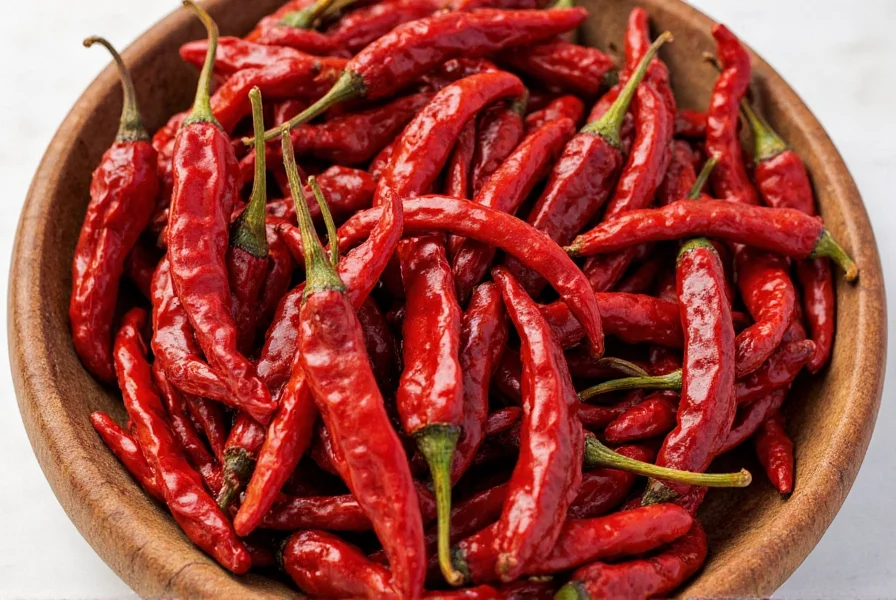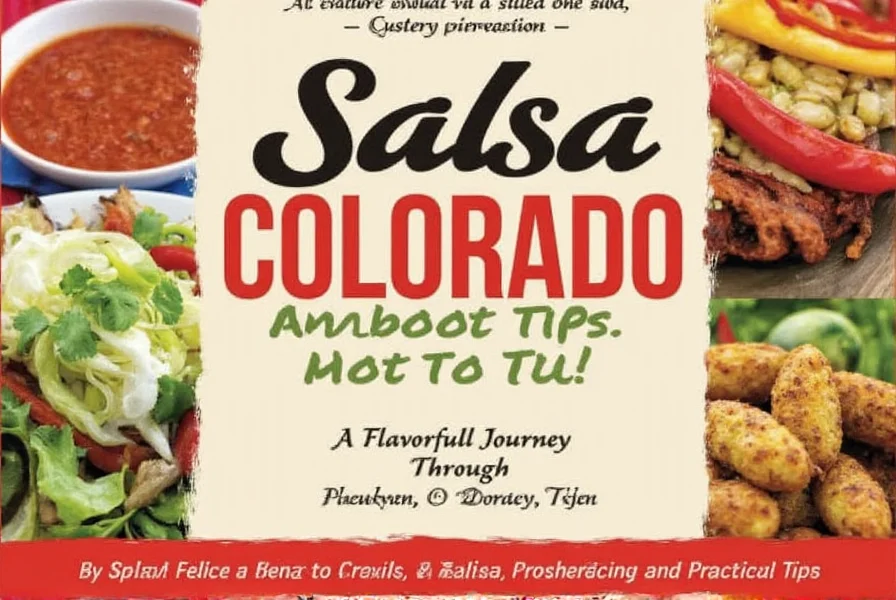Table of Contents
Step-by-Step Recipe
Here's how to make authentic salsa colorado at home in 5 simple steps:
- Roast the dried peppers: Place 10 dried ancho peppers and 5 dried guajillo peppers on a baking sheet. Broil for 2-3 minutes until fragrant and slightly charred, flipping once. Avoid burning.
- Soak the peppers: Transfer peppers to a bowl, cover with warm water, and soak for 20 minutes to rehydrate. Drain well.
- Blend ingredients: In a blender, combine soaked peppers, 4 ripe tomatoes (cored), 1 small onion (chopped), 3 garlic cloves, 1 tsp ground cumin, 1 tsp chili powder, and salt to taste. Add 1/4 cup water if needed for smooth consistency.
- Adjust seasoning: Taste and add lime juice or vinegar for brightness, or honey for sweetness. For milder heat, remove pepper seeds before blending.
- Store properly: Pour into an airtight container. Refrigerate for up to 1 week or freeze in ice cube trays for 6 months.
Pepper Heat Guide
| Pepper | Heat Level (Scoville) | Flavor Profile |
|---|---|---|
| Ancho | 1,000–1,500 | Smoky, sweet, mild |
| Guajillo | 2,500–5,000 | Tangy, slightly fruity |
| Pasilla | 1,000–1,500 | Mild, earthy, slightly sweet |
| Chipotle | 2,500–8,000 | Smoky, spicy, bold |

Using Salsa Colorado in Cooking
Salsa Colorado enhances many dishes:
- Enchiladas or tamales: Use as a base sauce for rich, smoky flavor.
- Marinade for meats: Coat chicken or pork 30 minutes before grilling for tender, spicy results.
- Tacos or nachos: Drizzle over toppings for instant heat and depth.
- Breakfast dishes: Mix with scrambled eggs for a flavorful start to the day.

Buying Guide: Choosing the Best Salsa Colorado
| Brand | Key Features | Best For | Target Audience |
|---|---|---|---|
| La Costeña | Traditional Mexican-style, real peppers and tomatoes | Tacos, enchiladas, burritos | Cooking enthusiasts, casual diners |
| San Miguel | Smooth texture, sweet and tangy profile | Dips, sauces, recipe bases | Home cooks, food lovers |
| Los Tres Reyes | Blend of dried peppers, no artificial additives | Authentic Mexican cuisine | Chefs, food purists |
| Cholula | Spicy with garlic and vinegar notes | Grilled meats, salads, hot sauce | Spice lovers, adventurous eaters |
Frequently Asked Questions
What is the difference between Salsa Colorado and regular salsa?
Salsa Colorado is a cooked sauce made from dried chili peppers, tomatoes, and spices, resulting in a smooth, rich texture. Regular salsa is typically fresh, raw, and chunky. Salsa Colorado has deeper, more complex flavors due to roasted peppers.
How long does homemade Salsa Colorado last?
Refrigerated in an airtight container, it stays fresh for up to 1 week. For longer storage, freeze in ice cube trays for up to 6 months. Always check for spoilage before use.
Can I make Salsa Colorado less spicy?
Yes. Use milder peppers like ancho or pasilla, remove seeds and membranes, or add a touch of honey or sugar to balance heat. Avoid chipotle peppers for a milder version.
What dishes pair best with Salsa Colorado?
It works perfectly as a base for enchiladas, tamales, and chiles rellenos. Also ideal for marinades, soups, stews, tacos, and even scrambled eggs. Customize with lime juice or vinegar for brightness.
Is Salsa Colorado gluten-free?
Yes, when made from scratch with peppers, tomatoes, garlic, onions, and spices. Store-bought versions may contain gluten additives, so always check labels if you have sensitivities.
Can I freeze Salsa Colorado for later use?
Absolutely. Freeze in ice cube trays for portioned servings, then transfer to airtight freezer bags. It maintains quality for 4-6 months. Thaw in the fridge overnight or add frozen directly to cooked dishes.










 浙公网安备
33010002000092号
浙公网安备
33010002000092号 浙B2-20120091-4
浙B2-20120091-4